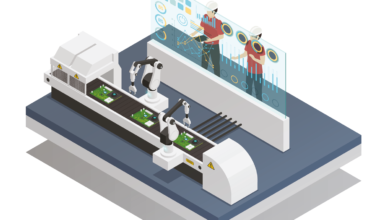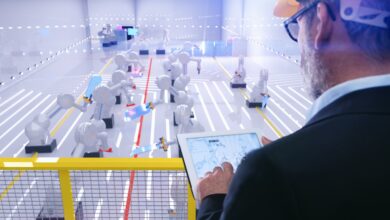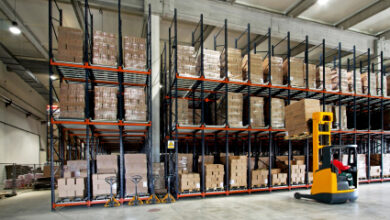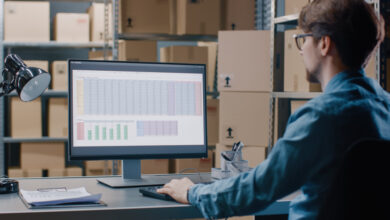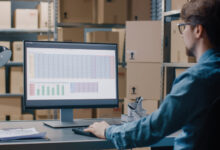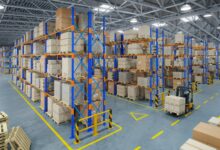Our Most Read and Watched Content in the Manufacturing Sector on Dijitalis Blog in 2020

We are delighted to welcome another year on our blog page prepared by Dijitalis experts. Since we launched our blog in June 2020, we have built a structure in the manufacturing sector with unprecedented depth and diversity in Turkey in terms of content quality, variety, and continuity, applicable simulation, optimization, and artificial intelligence technologies.
We have endeavored to raise awareness of scientific techniques that can be applied in the manufacturing sector through blog content, online training, webinars, e-books, and email newsletters.
The greatest thanks are deservedly given to our experts who have contributed to our blog page with their excellent content. We thank you, our valuable readers who follow us with interest, and leave you alone with the most read and watched content of 2020.
1) 5 Myths About Industry 4.0
Answering questions such as which aspects of Industry 4.0 should be prioritized, which technologies should be heavily invested in, and how to determine expectations in your organization contributes to understanding what you want when talking about Industry 4.0. In this article, we debunk common misconceptions.
Go to 5 Myths About Industry 4.0
2) Incorrect MRP Calculations Lead to Excessive Inventory and Shortages
No matter what industry you are in, shortages of materials are one of the most common reasons for line stops. On the other hand, while production is stopped due to lack of materials, you will also see shelves and floor areas filled with excessive inventory. What causes this seemingly contradictory situation? In this article, we explain the flawed assumptions made by MRP.
Go to Incorrect MRP Calculations Lead to Excessive Inventory and Shortages
3) Sentenced to Excel; Reward or Punishment?
Starting his article, our project manager Şeref Bulut says, “I liken planners to jugglers who have to juggle many balls. These balls, labeled with inventory, capacity, OEE, demand, customer satisfaction, labor, etc., must progress every day on a thin line without dropping a single one. Planners with this skill must know something, and therefore, Excel must be able to perform this task. Is this true? No, half of this proposition is true, and half is false. I would like to explain what is true and what is false.”
Go to Sentenced to Excel; Reward or Punishment?
4) Future of Manufacturing: Robotic Automation
The use of technologically advanced equipment in the manufacturing sector is increasing. Industrial robots, which have begun to be used in this sector, constitute the most important technologies of the sector. Progress in human-robot interaction has been made with technological developments in industrial robot systems. These robot systems are in active and passive collaboration with humans. This contributes to factory automation.
Go to Future of Manufacturing: Robotic Automation
5) What is APS (Advanced Planning System)?
In today’s conditions, manufacturers must have an advantage against competition. Factories are constantly looking for ways to be more efficient and become the best player in the market. From our perspective, a factory that does not use an advanced planning system (APS) cannot fully achieve this goal. Advanced planning systems (APS) are designed to improve the synchronization of production processes, provide foresight by predicting the future, increase capacity utilization and on-time delivery rates, and also reduce inventory levels and waste simultaneously.
Go to What is APS (Advanced Planning System)?
Our most watched videos in 2020 are as follows:
1) Success Story of Machine Manufacturer Emremak
Our latest watched video content. Emremak had to prove to his customer in Germany that his newly designed machine would work as requested. By setting up the digital twin of his machine, he solved many design and commissioning problems by bringing together the designer, automation engineer, mechanic, and customer side in a virtual environment.
2) Capacity Gain with Setup Minimization
During scheduling, grouping appropriate jobs together for setups and adjustments is crucial to minimize the time lost for setups. However, most scheduling software considers setup times based on a standard average figure. Whereas the changeover time for a mold can vary from machine to machine. Or there may be differences in time between switching from product A to B and switching from product B to C.
3) Urgent Order Management
It is crucial to provide realistic delivery dates for orders. Especially for urgent orders, it is necessary to respond to the customer quickly and meet the promised deadline.
Changes in existing orders or the impact of new urgent orders on production capacity should be visible within seconds on the schedule.
4) Digital Twin for Machine Manufacturers
In this video, global manufacturer Novo Nordisk simulates the installation of its new fully automated production lines. This allows them to test the physical and kinematic characteristics of the machine and measure its performance accurately. The created digital twin can be connected to PLC for control and testing of the automation system before the machine itself is installed in the real world.
5) Virtual Reality for Facility Layout
In another highly watched video of ours, we demonstrate that the planned facility layout can be visualized in a virtual reality environment.
We will be here with inspiring content in 2021 as well. Wishing you healthy and happy years ahead!





